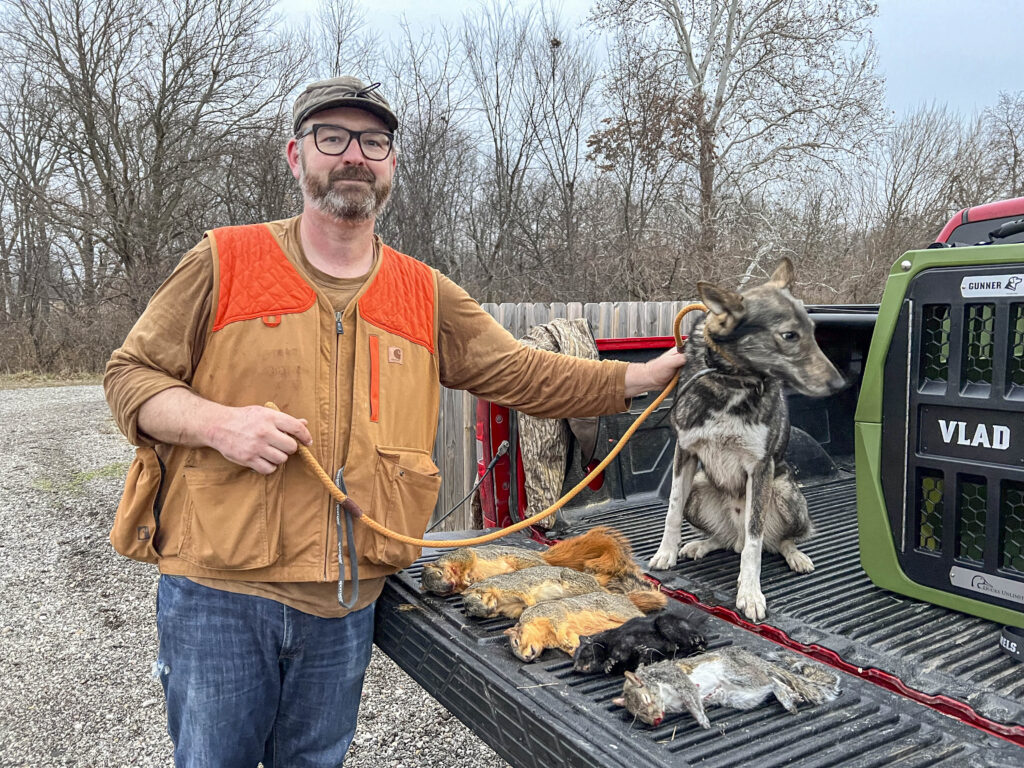West Siberian Laika: Dog Breeds
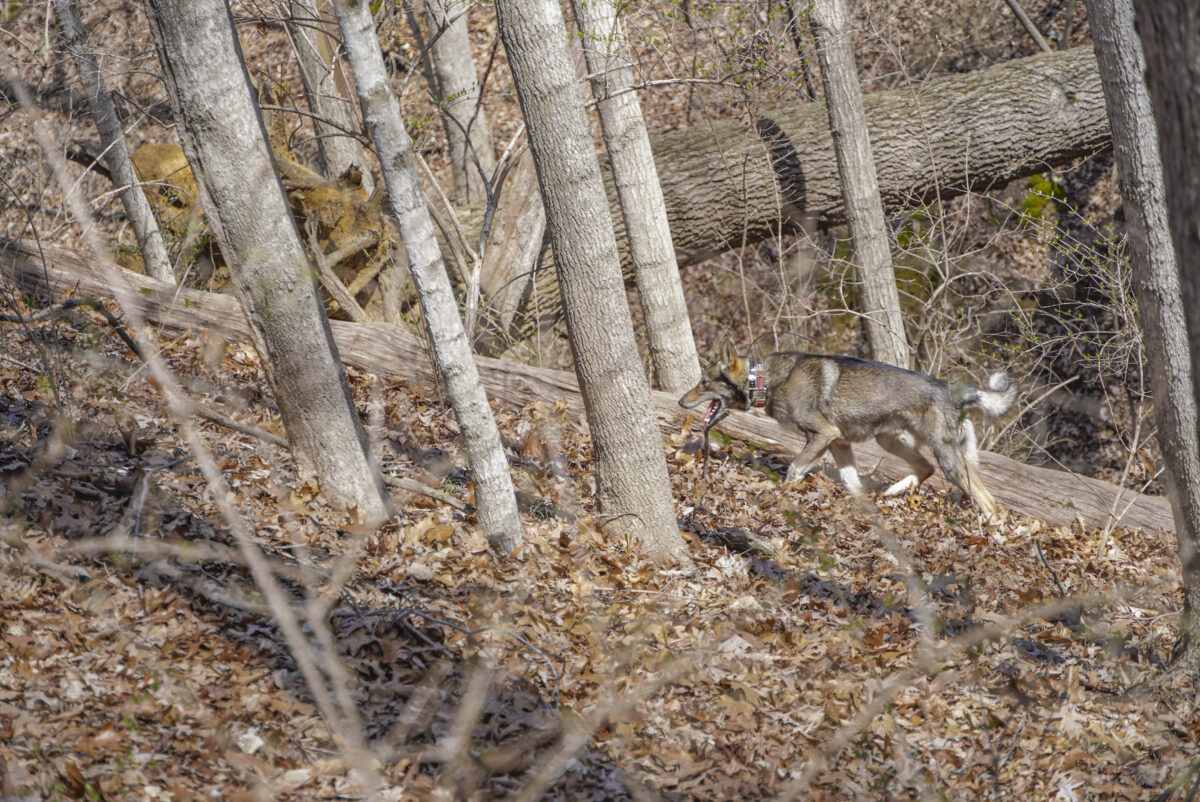
This Ancient Russian Breed is Built to Track and Tree Game, Big and Small, But Can Learn to Hunt Any Quarry You Pursue
Story & Photos By Joe Genzel
Young hunters in Illinois grow up in a tree stand. Deer season is a rite of passage in this state, which is well-known for its trophy whitetails. Killing that first doe or button buck during youth season quickly becomes a lifelong pursuit of thick-antlered bucks. The woods are often crowded with deer hunters from October until Christmas. So, there was no surprise when I pulled into a muddy lot with my six-month-old West Siberian Laika, Vlad (short for Vladimir), on a cool November morning and saw five trucks—all adorned with deer-themed bumper stickers—already parked.
Illinois does not have massive swaths of public land, but there are plenty of public deer hunters. That makes it difficult for a squirrel hunter to follow behind his young dog without interrupting a morning sit. I considered turning around and heading back home. It was a small cut of timber, only 80 acres, making it tough to hunt Vlad without pissing someone off. But there was an abundance of squirrels in those woods. I knew that from years of duck hunting near an adjacent wetland.
Vlad was ready, and I didn’t want to waste a good opportunity to hunt him for the first time. He was barking treed squirrels regularly on our daily hikes. At home, he spent hours in a gully that ran through the neighborhood, often catching fat suburban fox squirrels, possums, and groundhogs. I decided we would walk the perimeter of the woods so as not to disturb our deer hunting friends. Vlad darted from the truck cab, immediately rolling around in a mud puddle. He was filthy, and I regretted forgetting his kennel.
We walked cautiously down a levee and then into the timber. I stepped lightly, doing my best to ensure the deer hunters did not know we were there. Vlad’s nose went to the ground, and I could tell he was on a track. Being so young, Vlad never ranged more than 50 yards away from me. At home, I could leave him off leash, and he would mill around in our backyard, never leaving the boundaries of our property. That is no longer the case. He’s five years old and always ready to explore.
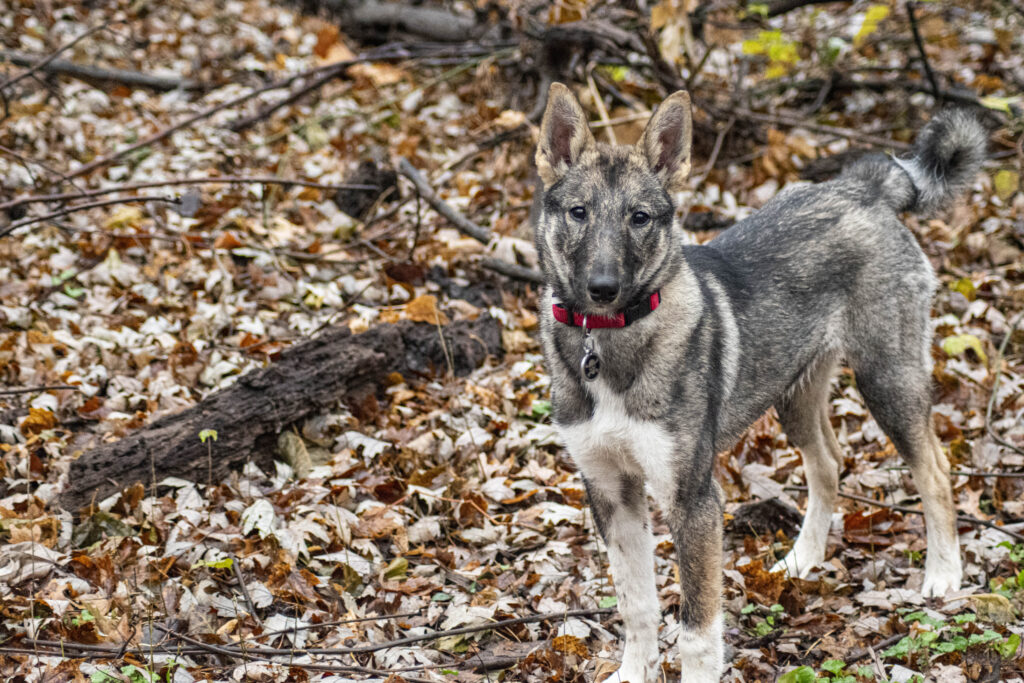
So when Vlad made a beeline for a large oak tree about 100 yards in front of me, it was clear he was on a squirrel. I began looking at the tree, searching for the twitch of a bushy tail. Just before he reached the oak, Vlad pounced to the right into a thicket, flushing two grey squirrels. They were briefly on the ground, then scampered up the trunk of the tree … but not quickly enough. Vlad was at the base of the oak, his big front paws scratching away in excitement. His barks were high-pitched, similar to the yelps of a newborn fox or coyote. I shouldered the shotgun, killing the first squirrel without issue. As I moved to the second, it jumped from the tree, and I shot it in mid-air, leading it like a blue-wing teal coming in hot to buzz a spinning-wing decoy.
I can’t describe precisely the satisfaction I felt and how proud I was of Vlad. Those who hunt with gun dogs know there is no better feeling in hunting than shooting wild game over your pup for the first time. To see the payoff after investing so much time and money, properly training a dog, well, there is no comparison. I put my hands behind Vlad’s ears and told him how good a job he had done. It all happened in about ten minutes. I wish that feeling could have lasted far longer. The two of us walked back to the truck. Vlad headed straight for his puddle for another roll in the mud, but I gave him a stern “NO,” and he sheepishly lapped up the water. Dropping the tailgate, I removed my vest and slid the shotgun into its case. Then I heard several splashes, turned around, and Vlad was on his back, rolling in the puddle I had just told him to stay out of. Regardless of age, that’s one of the best parts about any gun dog. They can be a hard-driven hunter one minute, then playful and mischievous the next.
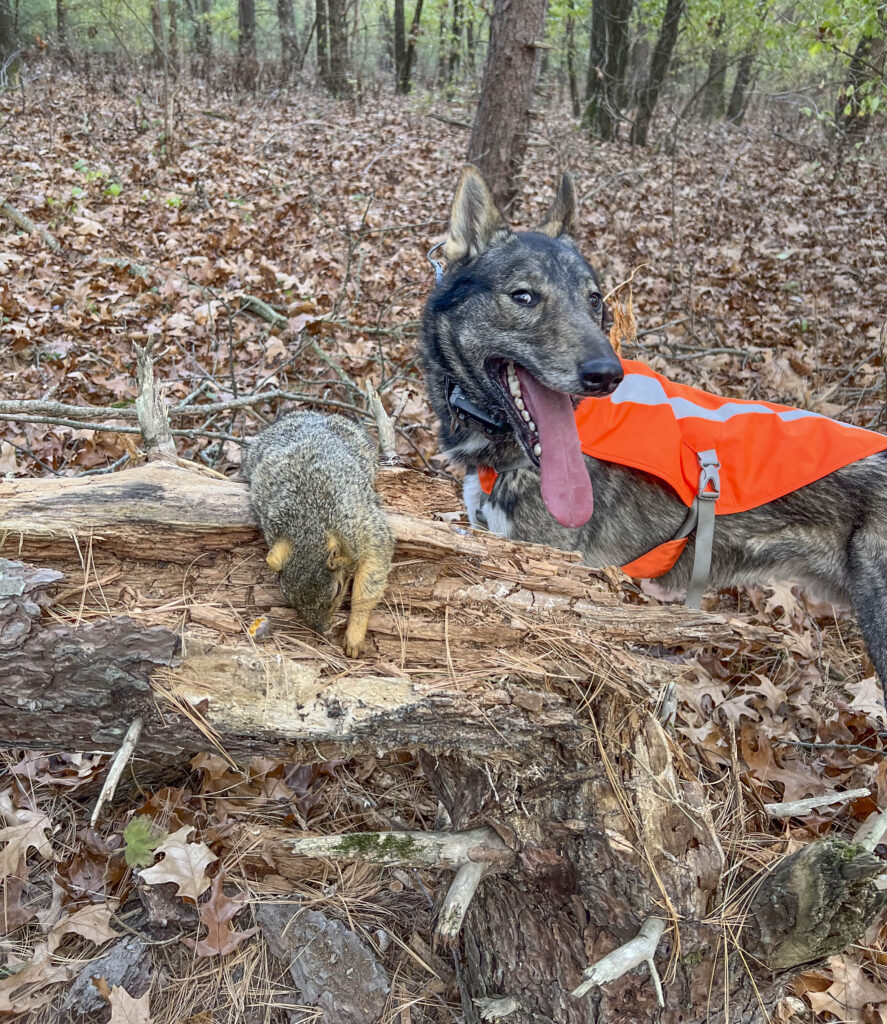
West Siberian Laika Origins
There are multiple Laika breeds, including the Karel, Russian-European, East Siberian, and West Siberian. The Karel is the smallest and specializes in small game. It has coloration similar to that of a red fox. Russian-European Laikas are slightly larger than the Karel, typically black and white, and built for small and big game hunting. Eastern Siberian Laikas come from the Russian highlands east of Baikal. Indigenous peoples used them for hunting and sled dogs.
West Siberian Laikas (WSLs) are considered the most versatile of the Laika breeds because the wide range of species they are suited to hunt, from bears to rabbits to squirrels. The Khanty and Mansi peoples of the West Siberian Plain used the dogs to hunt waterfowl, so they are more apt to make water retrieves, though that is not all WSLs take to water. I’ve taken Vlad duck and dove hunting. He is averse to water, but will find sailed birds that fall on land.
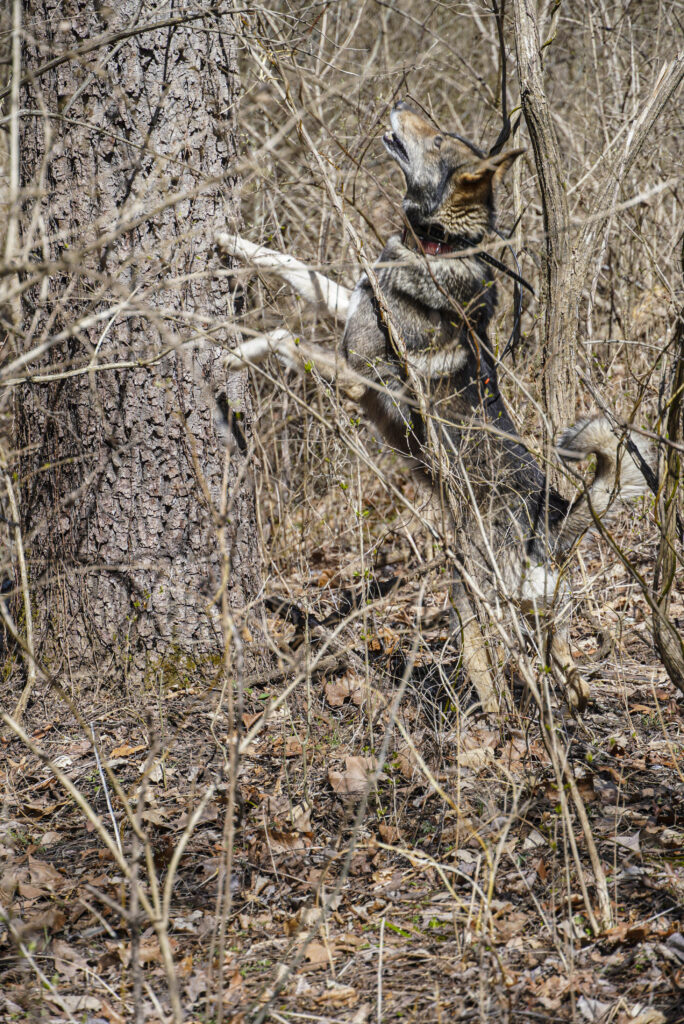
WSLs are a primal breed. They live to hunt and won’t stop hunting just because you aren’t walking behind them with a gun in your hands. In his book, Hunting Laika Breeds of Russia, author Vladimir Beregovoy divulges that ancient peoples did not feed their Laikas. The best dogs hunted for themselves to survive. Beregovoy, whom I bought Vlad from, lives on a farm with his dogs in Virginia. His dogs hunt and live on their own. He sometimes supplies them with chicken and other meat scraps, but otherwise, they are self-sufficient. Beregovoy is largely responsible for the recognition of WSLs in the United States. He imported (or helped import) many of the pure-bred Laikas that served as the foundation for generations of WSLs in America.
Like most dog owners, I feed Vlad dry kibble, but the drive to hunt for food is in his blood. He has caught countless raccoons, mice, possums, songbirds, and squirrels when I’m not hunting him. Sometimes, he eats parts of all those animals or digs a hole to bury them. Groundhogs are his archnemesis in the summer and early fall. He kills a few every year, biting down and shaking them until they expire. It can be brutal to watch, but Laikas are meant to hunt. Some owners may discourage such practices because they want their Laika to hunt specific game, but I allow Vlad to hunt just about anything he wants, except deer. I don’t want him to run whitetails and broke him of chasing through e-collar training. Vlad also knows I am not interested in hunting deer with him, so he doesn’t pay much attention if we run across a deer trail.
Training & Hunting West Siberian Laikas
Vlad, like any well-bred gun dog, is smart. He knows that when the e-collar is on his neck, there is a consequence for not listening to me, and does as I command. Conversely, when the collar is off, he is liable to go into business for himself. If the collar is not tight enough around his neck, Vlad knows I cannot correct him. But it’s rare that he doesn’t come to me when called. When he was a pup, I positively reinforced obedience with treats (and still do). Laikas are also fiercely loyal dogs. Some will only hunt for their first owners, so be cautious about buying or adopting an older Laika.
It can be tempting to start hunting your Laika early because they are often ready to hunt at three to six months of age (that varies depending on the dog), but perform basic obedience first. I taught Vlad to “come,” “sit,” and “place” using a MoMarsh dog stand. I also collar-conditioned him, using a Garmin Alpha 200i with GPS capability. Knowing where Vlad is at all times allows him to work without much interference from me. If you have never owned a squirrel dog, losing sight of a young pup can be nerve-racking. If you’re using a standard e-collar and don’t know where he is, that can cause you to recall him when he is on a scent trail. Or, the dog may quickly range outside the boundaries of the collar-transmitter, and then you have no control over him. The GPS gives you peace of mind so that the dog can do what he was bred to do—tree wild game.
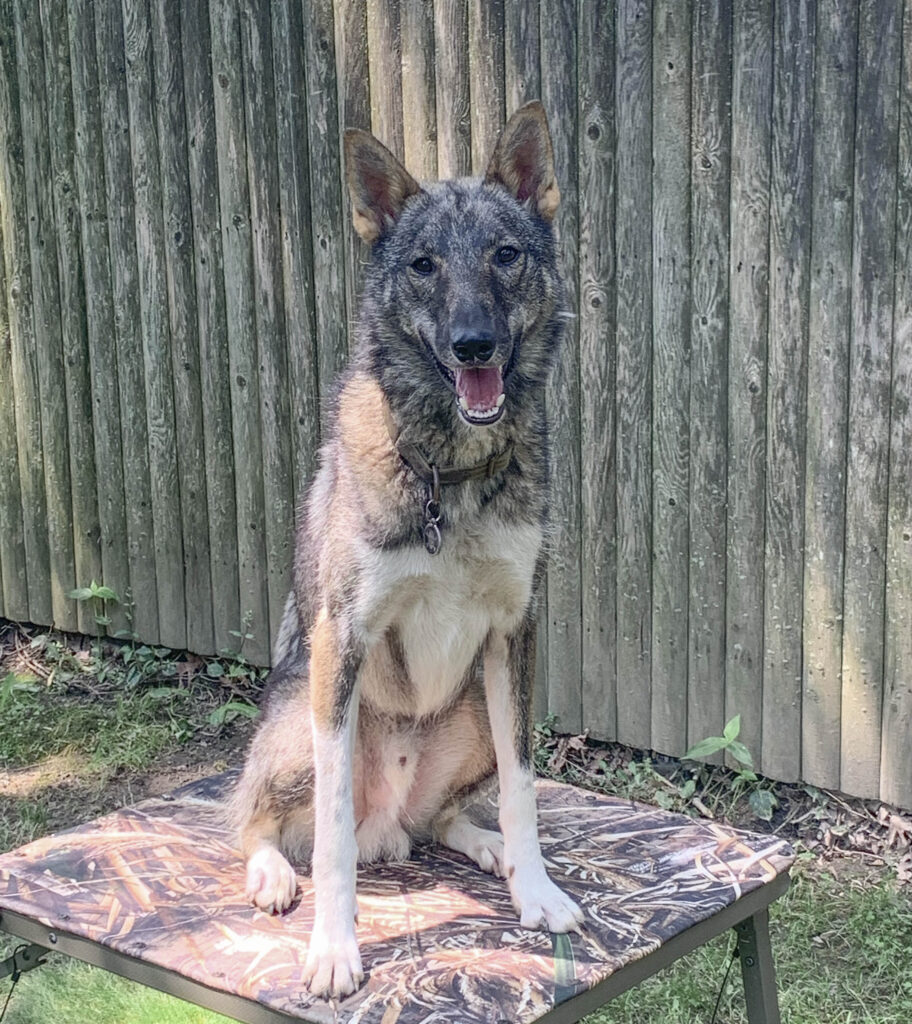
WSLs are very independent, so initially, it can feel like you’re along for the ride while the dog hunts. It’s unlike upland hunting, where you “hup” or “whoa” a German shorthair if he ranges too far. With Laikas, you go where the dog goes unless the terrain doesn’t allow for it. I picked up Vlad when he was two months old and immediately started taking him on walks in the woods on a 30-foot lead. From day one, he was hunting squirrels. He didn’t tree them right away, but I kept taking Vlad to squirrel-rich environments, standing at the base of the tree, and praising him after a gray or fox squirrel scurried up the trunk. I also screwed a squirrel feeder into a tree in our backyard, which kept Vlad busy on days we couldn’t get into the woods.
Translated from Russian to English, the word Laika means “to bark.” And many squirrel dog owners will not shoot a squirrel if their dog does not bark-treed. Vlad has never been big on barking at treed squirrels. He trees raccoons and possums hard, but squirrels typically have to limb to elicit a bark. If he doesn’t know where I am, he will bark. Most of the time, Vlad trees squirrels within 50 to 75 yards of me. Between the GPS, which tells me when he has treed, and the orange vest I have him wear, it’s pretty easy to find him.
Oftentimes, Vlad will look at me and then look up in the tree, directly where the squirrel is. I believe he is silent because he knows barking will likely make the squirrel move. Laikas are adept at hunting marten and sable, both skittish critters. Moving silently is paramount to treeing either species. Vlad has also treed coons, possums, and feral cats. I believe he barks at them because those species don’t move much when they are in a tree and they are “bigger” game than squirrels.
Living With West Siberian Laikas
Laikas are high-energy, so Vlad and I go for a run or hike most days and will come across someone who tells me how “gorgeous a dog” I have. Whenever that happens, I chuckle to myself. Because if they saw him come out of a thicket two summers ago, blood covering his snout and dripping from his tongue after encountering a groundhog, they wouldn’t think he’s so handsome.
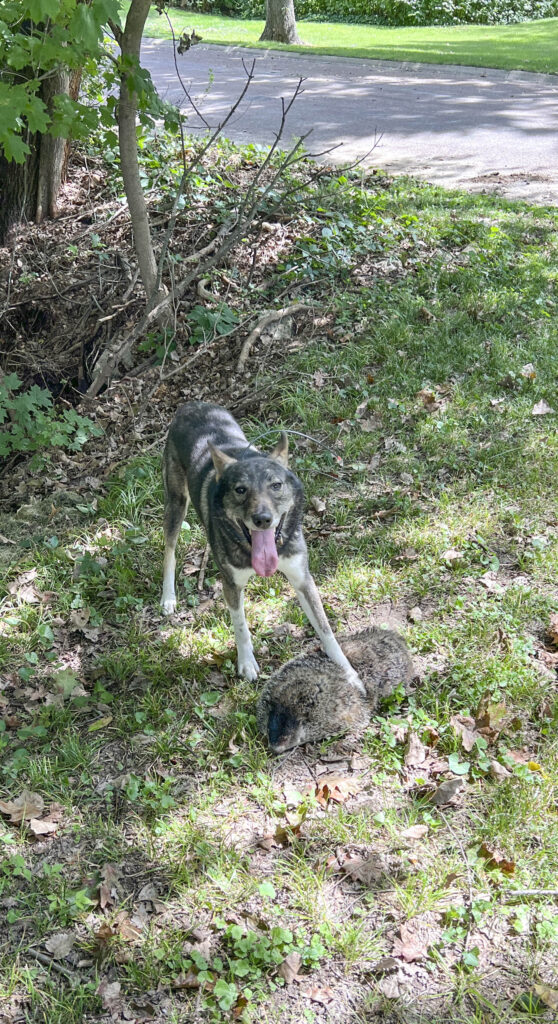
Vlad is a fish out of water in our suburban neighborhood. He is good with people and friendly to most dogs, but his place is in the woods, nose to the ground, tracking and treeing. Thankfully, there is a nature preserve nearby and a golf course where he can run free after sunset.
I know some Laika owners keep their dogs inside, but Vlad is averse to it, especially when it’s cold. The first winter I had him, the temperature dipped below negative 25 degrees. I brought Vlad in at dark to keep warm, but he pawed at the door. So I let him out to roll in the snow. After a while, he retreated to his insulated doghouse. In the morning, I checked on him, and he was hot when I reached into the kennel.
He is in his element at our family farm, digging holes, treeing the neighbor’s cats, and wading in the shallows of a small pond, trying to snag a bluegill between his canines. He bounds through tall grasses like a fox, pouncing on field mice. Once while we were dove hunting, he flushed a coyote out of a cornfield and gave chase. For a few seconds, they ran almost side-by-side, two wild animals racing across a small patch of native prairie, like it would have been centuries ago.
